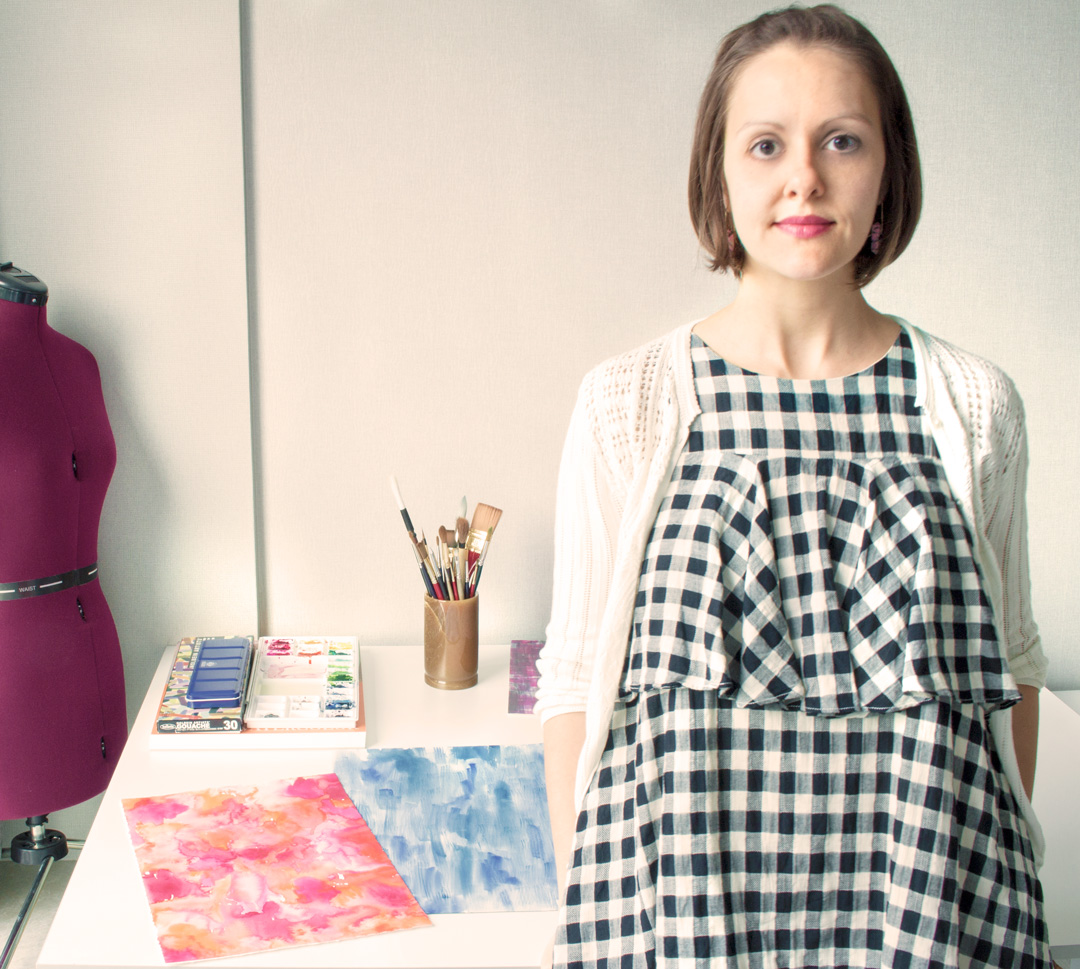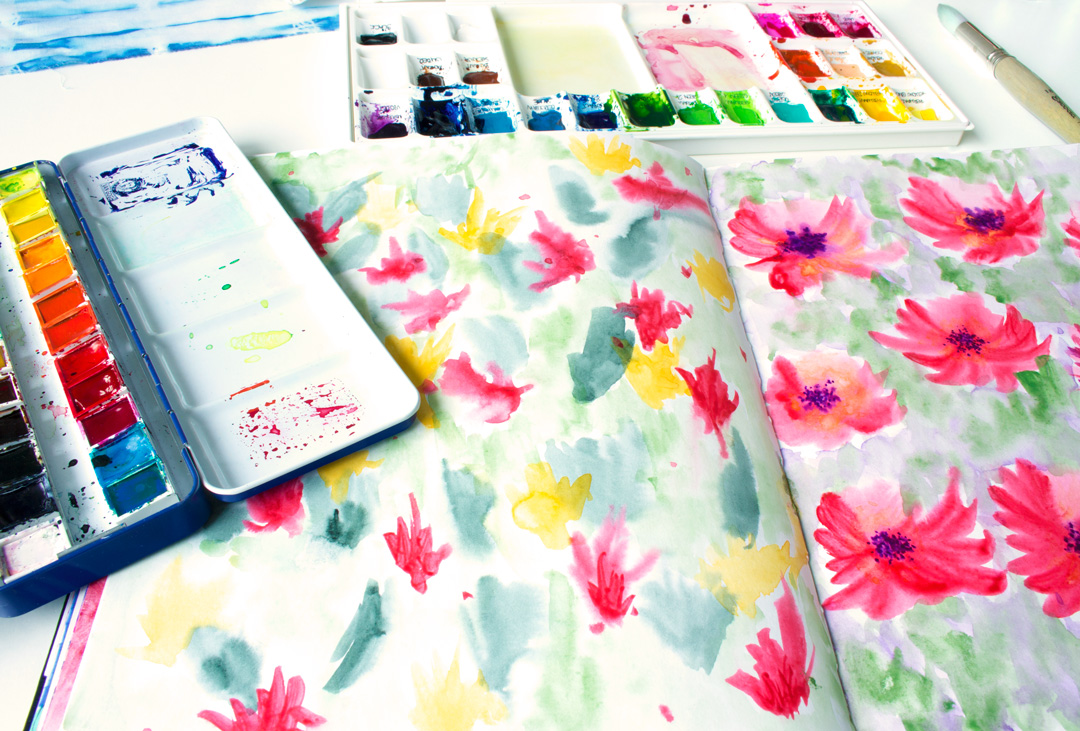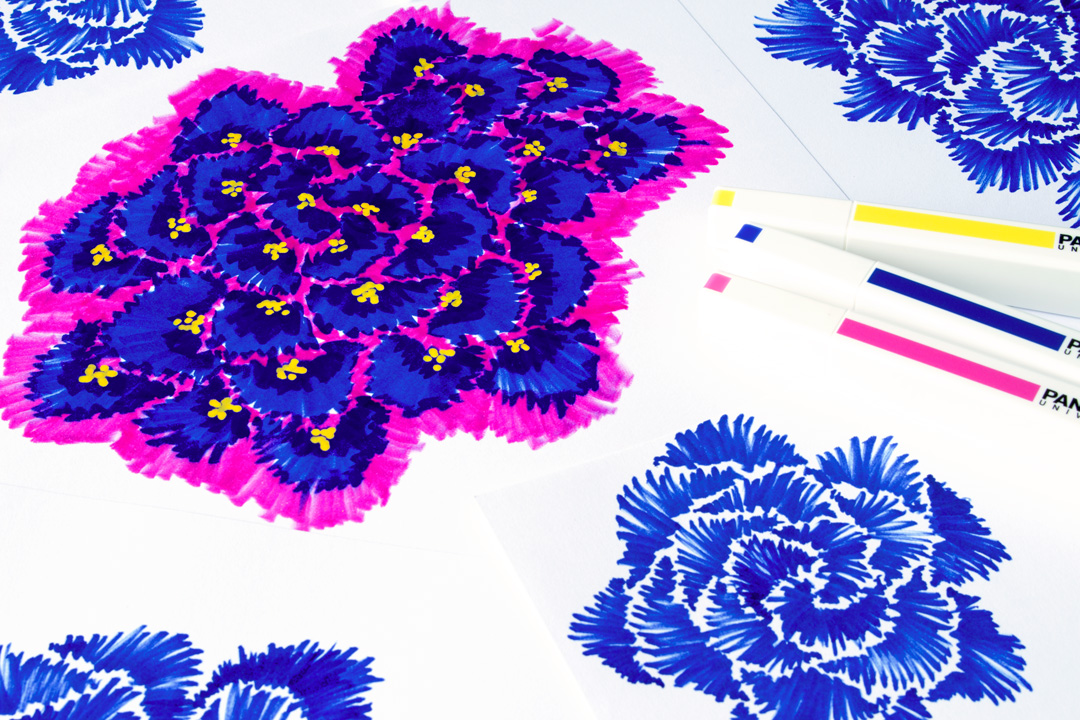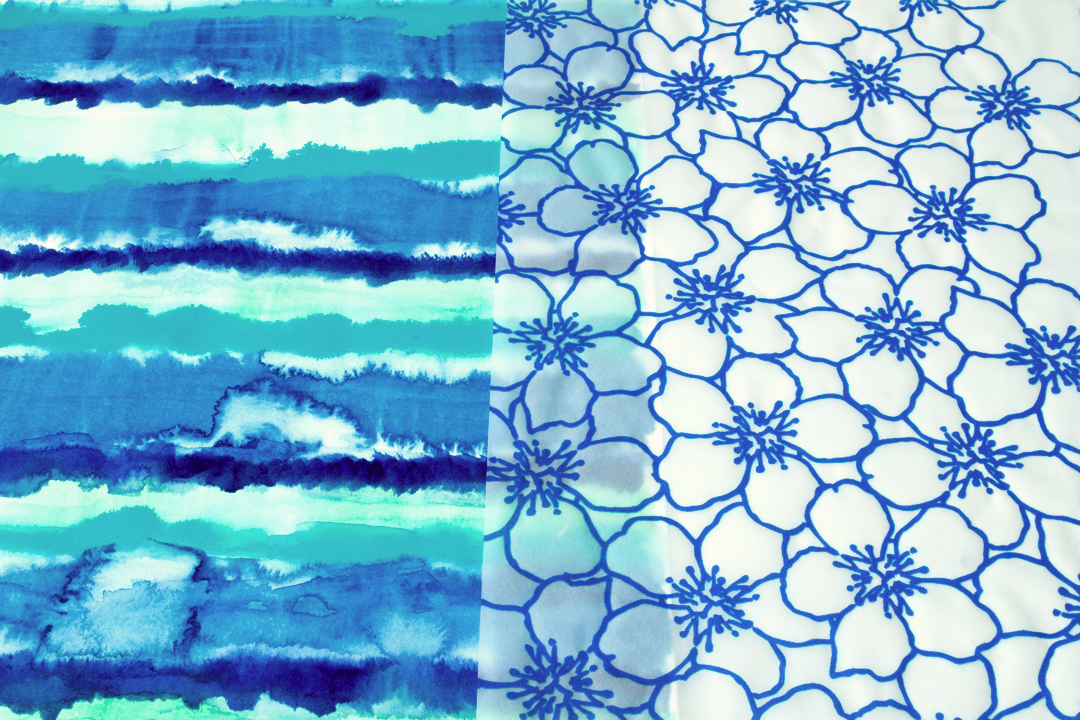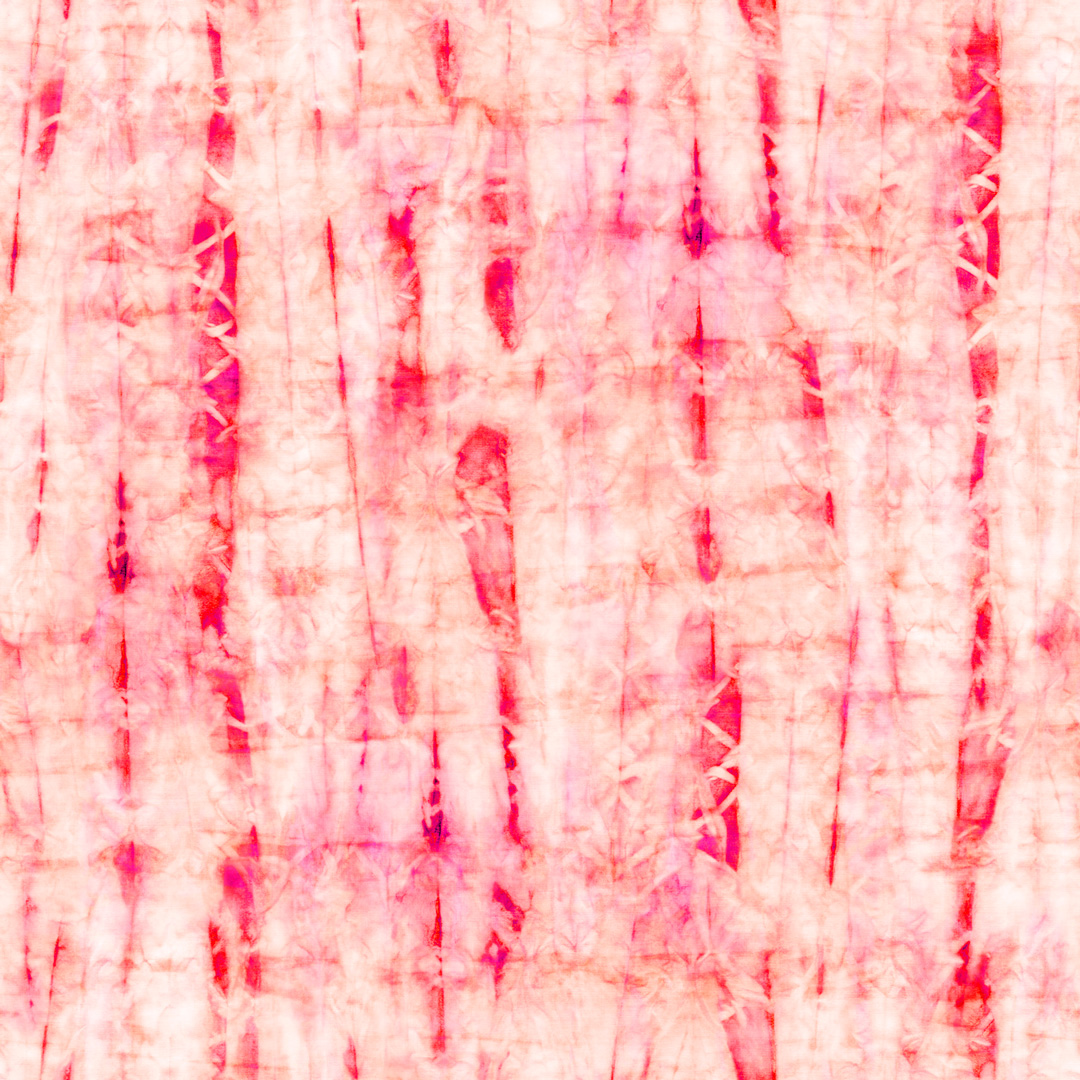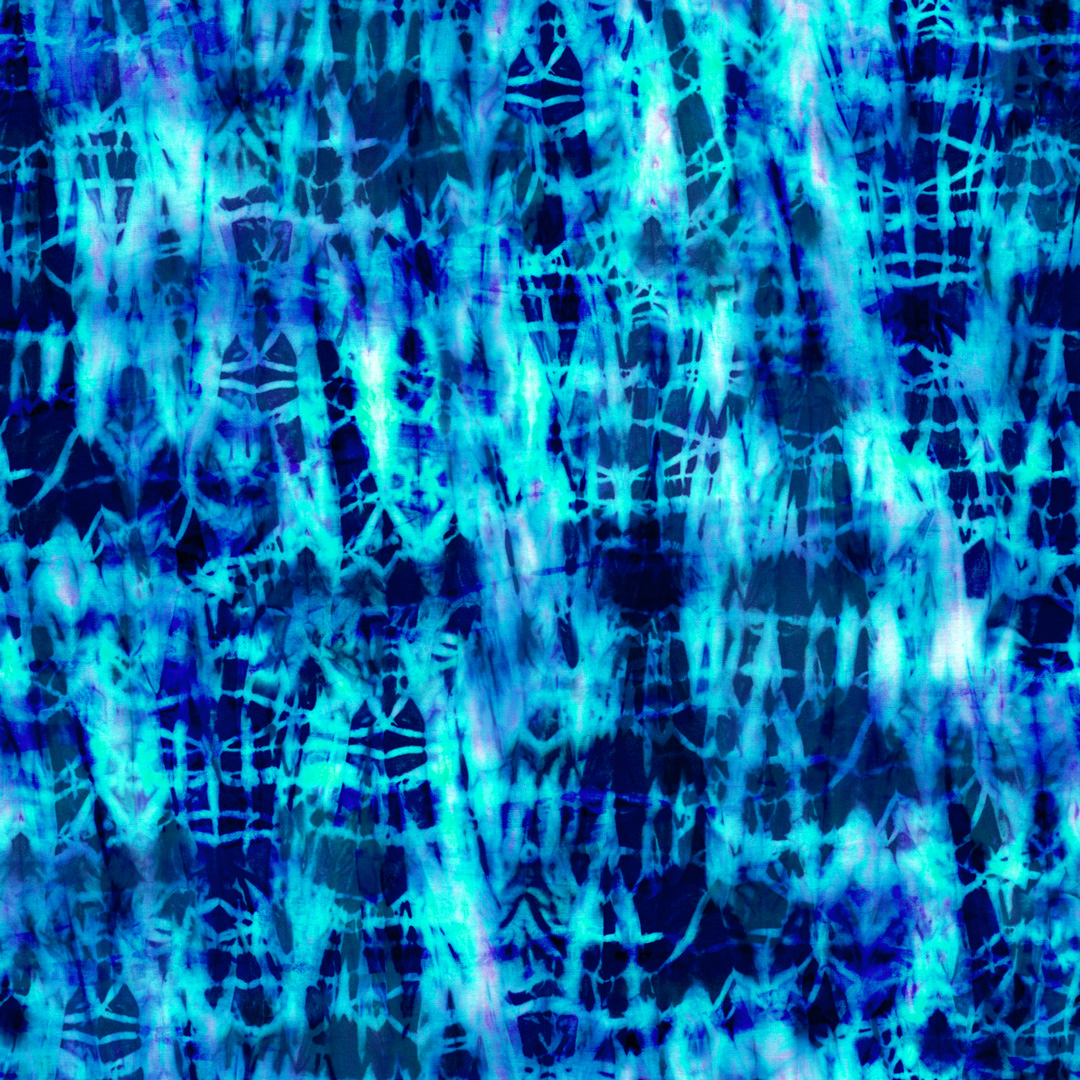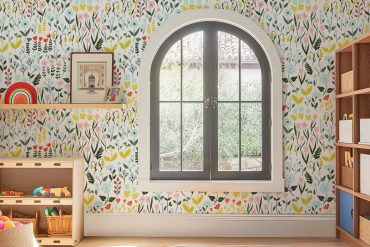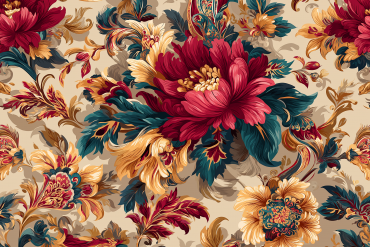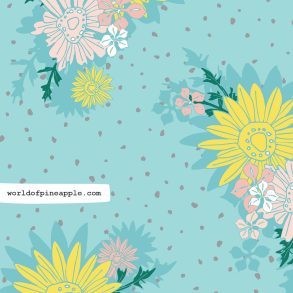Eva Carlavilla is a freelance textile designer and artist who will be joining us as our guest expert this month in the Textile Design Lab. Eva will be offering a training on creating beautiful shibori-like pieces that will be available exclusively to TDL members later in the month–join us here to gain access when the tutorial is released!
Now please enjoy this inspiring interview in which you will learn more about Eva’s design background, her views on trends, some wonderful words of wisdom for aspiring designers and more.
Please tell us a bit about your design background and career path. How did you become interested textile design?
I went to a Fashion School in Valencia (Spain), my home town. Back then, textile design was not in the program. I had no idea about what a repeat was. When I finished my degree I started working in a company designing clothes for babies and children. One of my duties, the one that I enjoyed the most, was to choose from our suppliers which fabrics to use in the collection, but one day I was also asked to design some proposals on my own to get them printed. I was like…WHAT???! Of course, I said “sure, no problem” and started a race against the clock to deliver something acceptable for production that wouldn’t make me lose my job. Thanks to the online world, in about 48 hours I had learnt the basics of making repeats. I saved my job. And I was hooked, a new world of design possibilities opened to me! A couple of years later, thanks to my portfolio, I received a grant from the Istituto Europeo di Design in Madrid to pursue an MFA in Textile and Surface Pattern Design. It felt so good getting a solid background! After that I worked in a design studio collaborating with important fast fashion companies for a while, and in 2013 I left Spain and moved to the US. I have been working freelance since then, splitting my time between textile design and botanical portraiture, my other loved discipline. In July 2016 I’ve relocated again, this time to Guangzhou, China, where I plan to continue doing freelance work.
Tell us a bit about your design process.
I start with some sketches in pencil, black marker, watercolour and/or acrylic (the fluid type) most of the time. Nothing too planned or finished, just letting the flow go. After that I scan everything and prepare the print layout or the repeat, and do all the adjustments and alterations needed. I used to work more in Illustrator, but now it’s mostly Photoshop. I think I got tired of so much vector work. I love to (hand) draw, feel the paper and get messy with paints. And unless I’m working on a specific project, I prefer to work in batches, 2-3 a week for creating and then another 2-3 for computer work. It keeps me sane, and makes it easier to schedule my time.
What are your go-to sources for design inspiration? Any books, websites, design tools, or other resources you would recommend?
I love books. Any monographic about an artist or specific period or subject. Flipping through their pages is just mind-blowing. Instagram is wonderful too. Colour palettes, shapes, new themes, mood-board ideas, you can find everything in there, you just need to set the clock to control the time you spend researching! And it leads you to discover new inspiring artists and business for your everyday life. I also love working old school, cutting shapes and photos from magazines or catalogs and creating my own collages and mood-boards for inspiration. And visiting museums, the art world is the most inspiring thing to me, along with nature. I recently saw a short film done with macro shoots of chemical reactions. Awesome. It is important to get out to see, feel and experiment ‘real’ things.
What role do trends play in your design process? What are your current favorite print and pattern trends?
That’s a tricky question. They are important. Trends are there and you have somewhat to be aware of them, but you just can’t rely on following all of them because then you get lost. There is too much information and opposite ideas out there. You have to find your own style and keep working on the themes you feel comfortable, the ones that inspire you. If not, the designs will lack personality and strength. And then your style will evolve and get influenced but in a subtle way. You can’t just reproduce what you see. I think the aim should be to create the next natural evolution of the current trend, not to copy that actual one as is. I love gingham and the diversity of floral designs that are coexisting at this time: ditsies, sketchy and photographic flowers, big expressionist blooms, etc. And a subtle oriental theme that seems willing to come back, very slowly.
Who are your design heroes (past or present)? What about them inspires you or influences your work?
Sonia Delaunay, her work is just amazing. I would wear every design made by her and I would cover the walls of my apartment with her (and her husband’s!) paintings and drawings. I also love Vera Neumann, Jacqueline Groag (and the Wiener Werkstäte) and Raoul Dufy, among many others. Their use of colour, the perfect imperfection of their drawings and motifs, the geometry of their designs, the repeat layouts… You can never get tired of them, they are wonderful! My other heroes come from the art world. All the -ism movements that happened in Europe between the beginning of the 20th century and the 50’s; also American Abstraction. The Rothko Room at The Phillips Collection in DC can get you to a meditative state and boost your energy, if you get the chance to be alone in it! And the Guggenheim room in NY that showcases their collection is just perfect. Last but not least, I also marvel at the Soviet textile design movement that took place during the 20’s and beginning of the 30’s, with designs from Varvara Stepanova, Liubov Popova, Natalja Goncharova, etc.
Over the course of your career, what actions or decisions have made the biggest impact in your design business?
Taking the leap from being employed to being unemployed and then start flying solo. Doing this during an economic crisis time. My job at the studio was not what I was aiming for, so I quickly reset my mind. I had nothing to lose and everything to gain, but it was not easy. Moving to the US also had a big impact, it meant a fresh start as a whole. There’s also more respect for the creative industry and the freelance figure is more stablished here than in my home country. I’m not sure about the reason but I should also name having an Instagram account. Even though the list of people who receives my feeds is quite small and I don’t post compulsively, a few good things have come that way.
What would you consider to be your most proud achievement or greatest success so far in your design career? What are your goals for the future?
I think of every design that finds a new home as a success, it makes me happy. And the ones that don’t, I consider them learning steps, so everything counts. I don’t like to put some company names on top of others. So I just would say that I’m proud of doing what I love to do, little steps at a time. I feel touched when people commission me for work that is not textile related. I’m working on a wedding invite, and about a month ago I was asked to design a tattoo! For the future, keep on working, growing and collaborating with bigger established design studios. A new website is also coming, probably allowing clients to buy designs online. And one day I would like to help in promoting or spreading the word about textile design in my home country. There’re a lot of great artists in Spain but, at least when I left, there was no cohesion or strength as an industry like the one you can feel in the US or England. It makes me sad to walk a trade show and find no booth with Spanish designers. I haven’t given it so much thought, but it’s in my head. Something needs to be done. Maybe when I go back in a few years… I’m open to ideas!
What have been some of the challenges you have faced throughout your design career and how have you overcome them?
Transitions are quite hard. I’m sitting at my desk writing on my computer for the first time in five months. Keeping up to date, being on time with deliveries, and pulling out the energy to create can feel more like a burden rather than your dream job during the relocation. But I have learnt to be more resourceful, to work in coffee shops, with computers that are not mine, and to switch from Mac to PC without going crazy! It’s a lesson of humility, not having things under control. Things can go south, you can get angry and cry, a lot. And ask for help. Sole entrepreneurs sometimes forget that it’s ok (and a must) to ask for help. Time management is another challenge, especially if your studio is also your home. And staying true to yourself and your style, even if you can’t define it clearly. I don’t feel like designing gothic dark themes. I tried in the past and I didn’t feel comfortable. Now I don’t worry about them, no matter how trendy they are. Honesty is the key. And getting out of your comfort zone from time to time in order to improve your skills.
What advice have you received in your career that has stayed with you or influenced you? Do you have any words of wisdom for aspiring designers trying to make their way in the textile design world?
*Don’t rush things. Don’t overthink things too much. Trust your gut. When in doubt, even if you are scared to death, jump!
*No is never a plain, harsh no. It can mean two things: (1) It doesn’t fit me because… Option discarded. What’s next?. (2) Now is not the time, at some point it will be. What to do next? Learning to discern quickly which kind you have on the table (or in your email) and acting accordingly will save you a lot of time, tears, and awful conversations with your inner jerk.
*Respect yourself. Respect your work. Respect your peers and the industry. If you have your basic costs covered, don’t throw away your work for (almost) free. Those who want to buy at that price don’t respect you and your peers, don’t respect your work and don’t respect the industry. And will never do.
*Don’t compare with others. You should learn, read and get inspired, a lot. But your path is only yours to walk. Following other’s paths and constantly comparing yourself with them won’t get you anywhere, and will suck your energy.
*Have a life! Take time for yourself and those around you. Go out. Practice yoga (or any kind of sport). Meditate. An enriched life will get reflected in your work.


